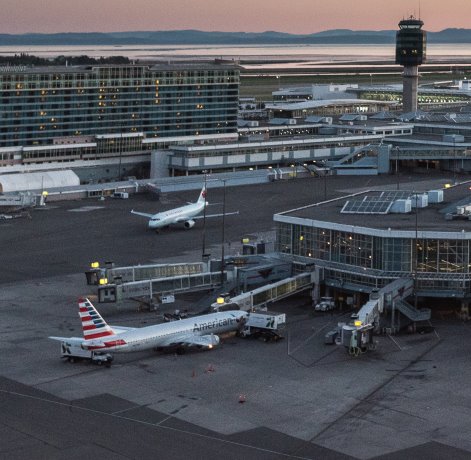Vancouver’s gateway to the globe is getting an upgrade.Don Ehrenholz, Vancouver Airport Authority vice-president of engineering and environment, recently spoke at the B.C. chapter of the Association of Consulting Engineering Companies annual transportation conference in Vancouver.
Vancouver International Airport (YVR) is the second busiest airport in Canada and new projects were recently added to meet demand, Ehrenholz said, citing a new high-speed baggage system and the recently completed Airside Operations Building.
But further work is needed to meet swelling demand over the next 20 years, he said.
"We have a $5.6-billion plan to expand and grow the airport between now and 2037 and it involves roughly 60 to 70 projects over that period of time. We have phased it so the first phase is about $5 billion between now and 2021," Ehrenholz said.
YVR is in the third phase of the expansion plan, he said, and several large projects are being considered.
"The top four projects are international terminal expansion, so four more gates for international flights, three more gates for trans border and U.S. flights, and then a new sustainable energy central heating plant, backup generators and a new parking structure," Ehrenholz said.
More passengers mean more planes coming in and out of the airport. Ehrenholz listed two options for additional runway space. One option is to build a runway into the Georgia Straight.
"You’re building an island and then paving a runway. So there are environmental impacts, it reduces the noise, but there’s impact to the wildlife and fish in the water and it’s a little more expensive," Ehrenholz said. The other option, a ground-based runway on the airport’s southern side, "is a little easier to do, but there are more impacts to the community," he said.
Either choice of runway will become necessary in 15 to 20 years, he said, "when we start to hit 30 million passengers."
A new utility plant is also needed to heat and cool the terminal as well as serve as a data centre and backup power generator. The estimated date of completion for the utility plant is 2021, Ehrenholz said.
A rainwater capture system will also be installed in parkades in order to meet sustainability goals, along with emergency water supply in case of earthquakes and other disasters.
Approaches to the airport will also be upgraded due to a forecasted increasing reliance on car sharing and self-driving vehicles.
"We believe it’s not going to be long into the future where there will be a fair contingent of car-sharing and self-driving cars, so we have to plan for those. It’s a little difficult because we’re not sure how people will use them, but we have looked at different possibilities and we’re planning for how to accommodate that," Ehrenholz said.
During 2017 plans will move to the drawing and design stage, he said, and there will be some tendering of construction contracts throughout the year.
"But the main construction won’t start until the spring of 2018," Ehrenholz added.

The Vancouver International Airport has plans for incremental but significant expansion over the next 20 years. Among the projects in the planning stage are extensions of the main terminal and either a new runway on the airport’s southern side or one that extends into the Georgia Straight.
Photo: Vancouver Airport Authority"










Recent Comments
comments for this post are closed